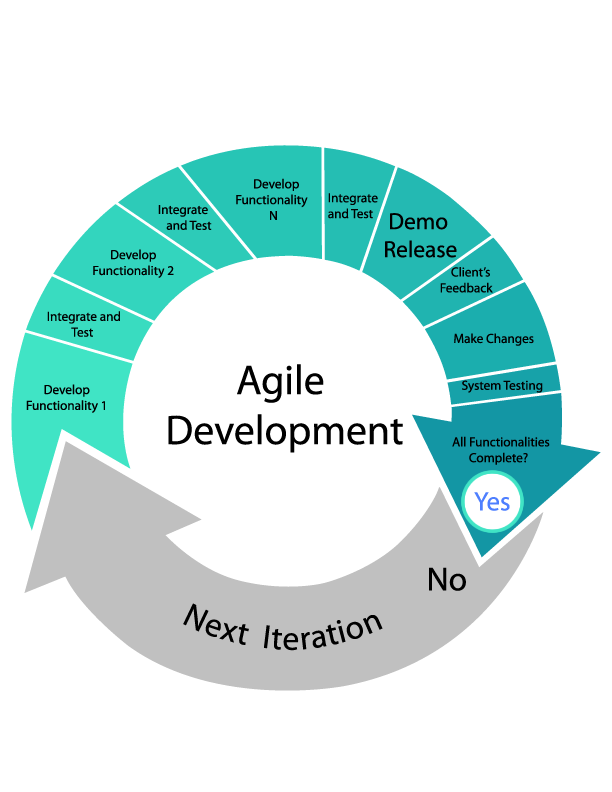When I wrote about the Tesla Model 3 I focused on design , infotainment system and its pre-order success. Today indeed I write about the production approach that, reading the recent news about skipping the beta testing, is going to be assimilated to the agile software development framework.

In the last days I read many articles about the Model 3 pre-production beta testing skipping. This news was so curious that I needed to retrieve the source, so link after link I landed on the Anton Wahlman articles on Seeking Alpha “The Secret Tesla Investor Call To Which You Were Not Invited” and “Tesla Selling Model 3 Test Cars: Accounting Questions“. Considering that at the moment none knows how these “test cars” will be sold, which quality level they will have and what kind of refinement will be done by the testers/customers, I’ll focus on what I define the Tesla’s agile car development framework.
First, what does agile software development is? Wikipedia says:
Agile software development describes a set of principles for software development under which requirements and solutions evolve through the collaborative effort of self-organizing cross-functional teams. It advocates adaptive planning, evolutionary development, early delivery, and continuous improvement, and it encourages rapid and flexible response to change.
For understanding how this applies to Tesla and Model 3, you don’t need to be a Software Engineer or a Digital Product Manager like me. Read just the words that I put in bold and then think how normal is buying a videogame or a smartphone and immediately update it online. Is it possible for a Tesla? The answer is yes, but why?
Tesla isn’t a traditional carmaker, not only for the charismatic presence of Elon Musk and not only because its investors are continuing putting money in. Tesla actually is the unique car producer that together with a car produces a software Operative System that, thanks to the car’s hardware, can manage remotely things that any other carmaker couldn’t control neither at its official assistance network. The most impressive Tesla OS back-end updates are: the battery capacity, the engine power and the self-driving functions.
Whatch this overview video where the deep hardware and software integration is demonstrated.
Reading the Tesla OS official page is easy to understand that the Musk’s car are disrupting the automotive industry because they shifted the core of their products from mechanics to software development. It doesn’t mean that the Teslas hardware (chassis, shocks, body, glasses etc) aren’t good enough the other carmakers or that they didn’t need the same R&D and pre-production tests. What Musk said is that the knowledge-base that they have accumulated from the development of the Model S and Model X will give them the opportunity to jump directly to the production lines skipping the beta test and leaving the “final testing” to the first users (read this Wahlman article for in-depth analysis).
Skipping the beta testing for a traditional car-maker is a sort of suicide, but if you are Tesla it is the first application of its agile car development framework approach. The Tesla’s cars are really different from the other cars. Its engines, chassis, interiors and all the other components are a way simpler from the other cars so, once tested and standardized, they don’t need to be tested again for all the models. I suppose that the electric engines and the batteries can be scaled in a easiest way than the combustion engines, and that the chassis architectures simpler and less stressed than traditional cars. Moreover the Tesla Model 3 will be really more simple than the Model S like this official press release states and the dashboard (absence!) suggests.

Above this, for sure Tesla has other three big advantages. The first one is the big amount of real usage data that users need to share with the company for having the OS updates; the second is the capacity to absorb a lot of physical/software recall/updates thank to its low volume production, its dealers network and its over the air OS updates; the third is the customers base that is composed by engaged and motivated fans that are healthy, techies, early-adopters, green contingent and sports car lovers (read “Elon Musk and the cult of Tesla” by Hope Reese).
So the Model 3 beta test skipping shouldn’t be interpreted like a dangerous move for accelerating the mass production and keeping the investors happy (during the investors call Musk admitted a delay in the mass production plan). It is more like an iteration of a product with the most important hardware parts already tested, while the easily replaceable components and the less critical front-end functions are still in development.
To be simple. Tesla is like Facebook launching its new app. The core is always the same but the design improves fast and in an iterative way. For this reaason Tesla presented the Model 3 as the next company model, not as a concept car.
Tesla has commoditized the cars hardware focusing on user experience, green technology, autonomous driving, products distribution and customers engagement.
That’s agile, but it is even a strategic move for conquering the electric vehicle supremacy and restarting, in 5 or 7 years, the traditional research and the tests for a real new product.
Photo credits: MatrixSoft, BGR, Carscoops.
Lascia un commento